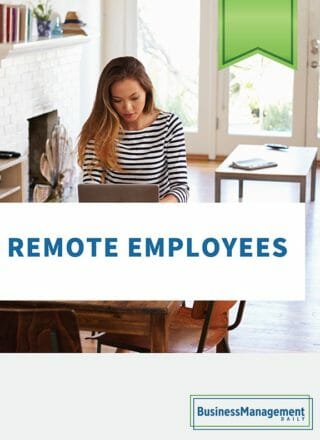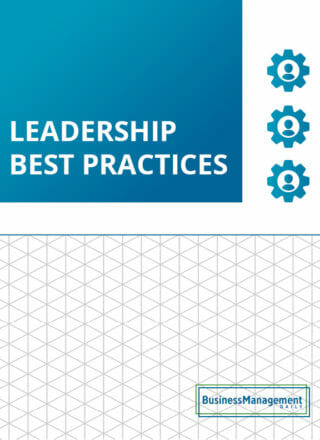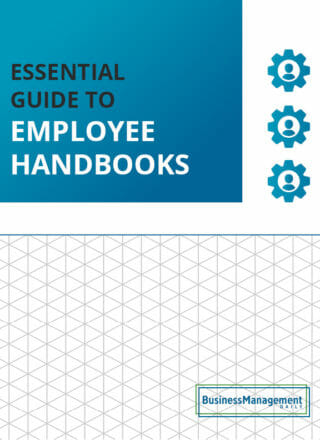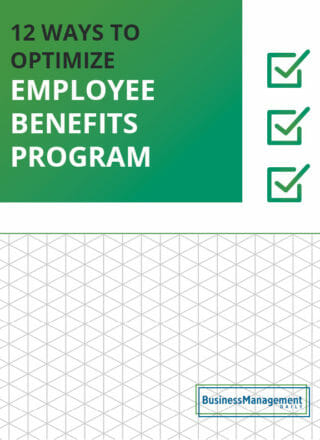Understand, identify, and address nepotism at work
There has been a lot of talk over the past year about nepotism and “nepo babies” in the entertainment industry. Whether it be an actress from a famous family or a model following in her mother’s footsteps, Hollywood is filled with these so-called “nepo babies”. Some are genuinely very talented and have proved they are stars in their own right, while others may fall flat.
Nepotism may take away opportunities from more qualified or hard-working individuals. However, the entertainment industry isn’t the only place where nepotism can be spotted. Looking closely, you can spot some nepotism hires within your organization.
Nepotism occurs in every industry. Sometimes, it’s more understandable; a family-owned business may have their teenage kids wait tables or work the reception desk on the weekends. In other instances, it’s more problematic, such as an unqualified candidate getting a high-level job or promotion over other qualified applicants because they are related to one of the company’s owners or executives.
To prevent nepotism at work from harming your company culture, explore the definition of nepotism at work and its signs below. We’ve also laid out some steps that you can take to prevent nepotism from creating a toxic work environment or causing poor hiring decisions.
What is workplace nepotism?
Workplace nepotism is providing preferential treatment or favoritism towards family members in a workplace setting. It can be considered a form of workplace discrimination. The key here is that it is unfair or preferential treatment based on family relations rather than qualifications.
If a family member is the strongest candidate for a specific role, promotion, or project assignment, it’s not necessarily nepotism to select them.
Hiring or providing preferential employment treatment to friends or others based on personal relationships may also be considered nepotism under some definitions. Still, it is typically referred to as cronyism rather than nepotism.
However, organizations should watch for this as it can be a serious problem and more challenging to track. After all, many people become friends with their coworkers, and it’s not unusual to recommend a past coworker for a role at your current organization.
Like with nepotism, the key issue is whether decisions are made based on merit, qualifications, or personal relationships.
Types of nepotism at work
Workplace nepotism is often grouped into one of two forms of nepotism:
- Reciprocal nepotism occurs when someone within the organization offers employment to a family member (or extends another offer, such as a raise or promotion). The recipient accepts the offer due to cultural norms, financial interdependence, loyalty, or to strengthen that personal relationship.
- Entitlement nepotism. Entitlement nepotism occurs when someone feels entitled to preferential treatment due to their relationship with a boss or leader within the company.
Reciprocal nepotism often occurs within family businesses, where a family member joins the company to help out the owner or out of loyalty to the family. You may also see reciprocal nepotism between spouses or members of the same household who are financially intertwined.
If someone is laid off, an employed spouse or family member may try to help them get hired at their company to keep the household afloat financially. These instances tend to be easier for businesses and their employees to navigate compared to entitlement nepotism, in which the hired family member may expect that they can get away with lower productivity, poorer performance, or breaking policies.
Examples of nepotism at work
Here are some common examples of workplace nepotism that employees, leaders, and human resources staff should all look out for:
- Making hiring or promotion decisions based on family relationships. This is one of the most commonly discussed forms of nepotism, where someone is given a job because they are related to someone in the company or industry who is influential or holds a position of power.
- Giving raises or higher pay to family members. If raises, bonuses or higher starting salaries are given based on family connections instead of merit, that is a form of nepotism.
- Giving preferential treatment to family members in regards to workload distribution. This may include putting them on desirable projects with more visibility or higher commissions, giving them a lighter workload than other team members, or giving them more desirable tasks and shift assignments.
- Sharing critical information with family members but not other employees. If the family owns the business, it may make sense for family members to be privy to sensitive information or closed meetings to which other employees may not have access. However, in most circumstances, sharing information based on family relations is a bad idea and can harm the workplace culture. If a high-level manager gives their family member advanced information on upcoming promotional opportunities or projects or exclusive insights on anything that has come up in leadership meetings, that can provide the manager’s family member an unfair advantage over other employees in the workplace.
- Applying policies differently for family members. Enforcing workplace policies uniformly is essential in maintaining a positive work environment and steering clear of any legal or compliance issues. Letting a family member get away with cutting corners or behaving inappropriately rather than enforcing all policies and expectations creates a significant liability for the company. It will also hurt employee morale as other staff will notice the favoritism.
Is workplace nepotism illegal?
No, nepotism is not expressly illegal within the private sector. Business owners are well within their rights to hire family members. Organizations participating in more rampant nepotism may face accusations of discrimination because families are often the same race.
Thus, nepotism can result in preferential treatment being given to a particular race or ethnicity while applicants or employees of other races receive unfair treatment.
While otherwise not illegal, nepotism at work is often a violation of company policy. Many businesses have policies against nepotism, and many examples discussed above may also violate other company policies. It’s also worth noting that government roles often have more stringent rules and regulations regarding hiring, promotional eligibility, and nepotism.
Negative effects of nepotism at work
Workplace nepotism can harm organizations and their employees. Here are several negative consequences to consider.
Lowered employee morale
Employees are incredibly observant and will spot any favoritism within their teams or workplace. That favoritism will be much more apparent and easier to spot when it’s happening due to familial relations.
If employees perceive that they need moderate treatment or that nepotism hires will always receive promotional opportunities, hindering their career trajectory.
Increased employee turnover may also occur due to lowered morale, or employees may feel they must leave the organization to gain fair access to training or promotional opportunities.
Decreased diversity
Having a diverse employee population and leadership is genuinely beneficial to the organization. When hiring or promotional decisions are based on familial relations, your company will have less diversity.
Family members are often the same race and ethnicity. They may have similar backgrounds regarding where they grew up, their education, their religion, and their family’s socioeconomic class.
Ideally, your company’s leadership team and each department or team should be composed of employees with diverse backgrounds and perspectives. These employees should challenge each other, explore different approaches, and create innovative ideas.
Even within the same culture or demographic, people can have different experiences.
Hiring and promoting less qualified candidates
It’s acceptable to hire family members and make them work their way up. However, hiring relatives or friends in roles they are not qualified for can negatively impact the company. Promoting someone who is not the most suitable choice for the role can also have a negative impact.
Family-owned businesses and nepotism
Nepotism can have many negative consequences, but it’s not always an inherently terrible practice. Family businesses often rely on nepotism and family hires to keep the business running. Therefore, the issue of nepotism may need different handling at a small family-owned business compared to a large corporation
Is nepotism in small family-owned businesses inherently bad?
A local family-owned business hiring additional family members is a somewhat accepted practice. Often, small business owners hire their children to work at the company so that they can gain work experience and learn the ins and outs of the business that they will someday inherit. This is still nepotism, as they hire employees based on familial connections, but it’s not necessarily bad.
People tend to create and build small businesses to build a better future for their families. It’s not surprising that they would want to provide employment opportunities for family members. They may also want to pass the business on to their children when they retire. As such, there may be more leeway to allow nepotism in hiring decisions at a small family-owned business.
However, these businesses should still know whether preferential or unfair treatment is based on familial relations. Keeping the company in the family shouldn’t mean that other employees experience poor treatment. It also shouldn’t mean they have unequal workloads or are permanently assigned the least desirable shifts or tasks.
What about large family-owned businesses?
Even major corporations can be family-owned. One of the largest corporations in the United States, Walmart, is a family-founded business, and the Walton family still owns about 50% of Walmart’s shares. However, nepotism in larger corporations is typically viewed more unfavorably.
There tend to be more moving pieces to manage in large corporations (and more steps to climb to the top), so you want to ensure that high-level roles are filled based on merit and strong qualifications rather than family ties.
Nepotism also serves less of a practical purpose in larger family-owned companies. A local restaurant owner must pass ownership to a family member or sell the business when they want to retire. If ownership of a small business is not passed on or sold, the company will generally have to close.
Meanwhile, large companies can continue to operate without needing a new owner. A CEO will be appointed to take over, and the initial owner can retire and hold on to the business’s equity.
That equity can be passed down to their children. The family will continue to benefit from the industry for generations, even if the owner’s kids and grandkids aren’t granted high-level roles within the company.
How organizations can reduce or prevent nepotism at work
Here is what organizations and employees can do to address the issue of nepotism in the workplace.
Document and be aware of potential conflicts of interest
The human resources team and company leadership must be aware of potential conflicts of interest that could result in nepotism or general favoritism regarding hiring and employment decisions.
Many companies include a question on their employment application asking the applicant to disclose if any family members currently work for the company. You can also inquire about and document any family relationships when employees provide referrals or references for applicants.
This doesn’t mean an applicant must be automatically disqualified if a family member already works for you. Deborah from accounting recommended your company’s marketing internship to her niece. The niece happens to be attending a nearby college. It’s okay to interview the niece. Just ensure she goes through the same process and meets the same standards as other potential interns.
On the other hand, consider this scenario. The son of your Sales Manager applies for a Sales Representative position. You will then run into a more significant issue. The Sales Manager would be a decision-maker during the hiring process. If hired, they would also become their family member’s supervisor.
Consider implementing anti-nepotism policies
Many organizations restrict hiring family members within the same team or department through anti-nepotism policies to reduce potential conflicts of interest like this. This can provide a solid middle ground where employees can still refer family members to open roles, but preferential treatment is less likely. Be sure to put any anti-nepotism policies in writing and include them in your employee handbook.
Have HR investigate all complaints
Being objective about the people closest to you, like your family, can be challenging. The HR department should get involved with any significant complaints or conflicts arising within the team. This is especially important when family connections exist. Nepotism often creates employee complaints of favoritism. It can also result in a manager or leader not properly addressing complaints of a specific employee’s inappropriate or unprofessional behavior.
If you hire your brother, for example, you may write things off as “that’s just his sense of humor” or “he always makes jokes like that, it’s no big deal”. You know him and are used to this behavior. However, he may be making jokes or saying things that could make employees uncomfortable or be perceived as a form of harassment.
A third party should manage and investigate employee complaints. Even without nepotism, team leaders may show some favoritism (consciously or unconsciously) towards top-performing employees or those they get along with better. HR can typically be more objective when complaints arise as they offer a more outside perspective to team conflicts.
Maintain organized performance management records
One issue that frequently arises for smaller businesses is not having an organized and consistent performance management process. Without clear documentation on an employee’s past performance to support their eligibility for a raise or promotion, decision-making can be less objective and may be more easily swayed by nepotism or cronyism.
Have a set performance management process in place to evaluate and document current employees’ performance regularly.Consider 360-degree reviews. This ensures that one manager’s opinion doesn’t fully influence the reviews. Also, be sure to track the completion of any productivity and training goals. Having this on file will help keep promotional decisions fair when deciding who will move up.
Have a standardized process for accepting and evaluating candidates
Before accepting or reviewing any referrals or internal applicants for an open role:
- Create a clear job description and list the specific qualifications you are looking for.
- Consider education level, certifications, skills, and years of experience.
- Lay out what is required and what qualifications are just nice to have.
- Consider how you’ll rate candidates during the resume screening and interview processes, and create a rubric if desired.
Sometimes, word gets around that someone is leaving and a role will open up. Employees then start suggesting names for consideration. Don’t evaluate internal applicants or look at the resume of an employee’s close friend or family member who happens to be looking for a job. Create a set job description and hiring criteria for the role first.
You want to ensure that an applicant or promotional candidate checks the boxes on your required skills and qualifications before you move them on to the interview process.
It’s best to have a policy of posting the job and considering external candidates. You should also consider those who are only referrals for each opening. However, only if there is an established succession plan with an internal team member already trained and prepared to take over the role. Opening roles to a vast pool of applicants helps ensure that the hiring process remains a meritocracy.
More Resources:
Organizational politics in the workplace: The good, the bad, and the ugly
Common ethical issues in the workplace
Respect in the workplace: Tips for leaders and employees






